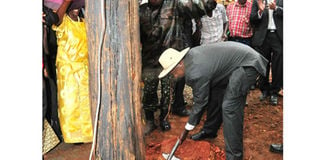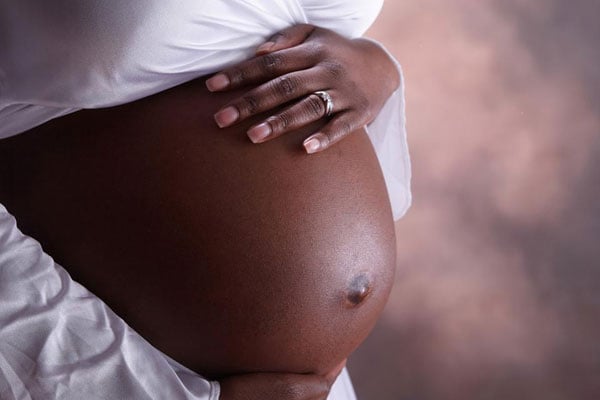Museveni switches on Nyagak

Mr Museveni pours earth into a hole holding an electricity pole on Friday. This was during the commissioning of the 3.5 MW Nyagak hydropower dam in West Nile. PHOTOs BY felix warom okello
What you need to know:
Residents, however, want government to subsidise on electricity poles to enable them connect power to their homes. They cite poverty.
WEST NILE
The long-awaited 3.5 megawatts of power from Nyagak hydropower dam has been commissioned. President Museveni switched on the turbine on Friday afternoon, lighting the West Nile region that has suffered power shortage for more two decades.
While commissioning the power plant, President Museveni explained that his government could not connect the region to the national grid due to the high connection cost yet demand from the region is low.
“It was not being wise to bring power from the national grid because the demand was still low. On the other hand, the width carriage from Lira, and by the time it gets here, the power would be lost and that is why we decided that West Nile has independent power supply,” he said.
Mr Museveni promised that the connection to the national grid would be made when the demand in the region increases. However, only Moyo and Adjumani districts would be connected to the national grid while the six remaining will be served by power from Nyagak dam.
The dam that has taken seven years to construct at a cost of about Shs27 billion, with funds from the German government, Aga Khan Development Foundation and Uganda government, will, however, supply 1.75MW of the 3.5MW built production capacity. Officials explained that the balance will only be switch on when demand arises.
“We will need 10.5 MW to have complete demand for power in this region and that would be after completing Nyagak II with 4.3 MW and III offering 3 MW whose designs are now complete. But at the moment the demand is 1.7 MW where the 3.5 MW is adequate,” State Minister for Energy Simon D’ujanga said.
Request for subsidies
Leaders in the region have, however, called on the government to subsidise the connection fee which, they said, is not affordable by many in the region. Only 5,000 people in the West Nile region are connected to the power line. These are located in Arua, Nebbi and Paih towns. The population is about 2.3 million. “Rural people cannot afford the connection fee. A single pole costs Shs1.5 million. So we need urgent intervention for subsidy on poles,” the chairperson for Zombo District, Mr Emmy Kakura, said.
The 3.5 MW is to serve the six west Nile districts of Paidha, Nebbi, Arua, Maracha, Koboko and Yumbe who have been using power generated from thermal plant.
The power will be supplied for about four hours a day.Minister D’ujanga said the connections would soon start for the upcoming towns in Parombo, Pakwach, Angal, Angaba in Nebbi, Warr, Nyapea in Zombo and will also connect to Vurra in Arua stretching to Oraba in Koboko and Yumbe.




